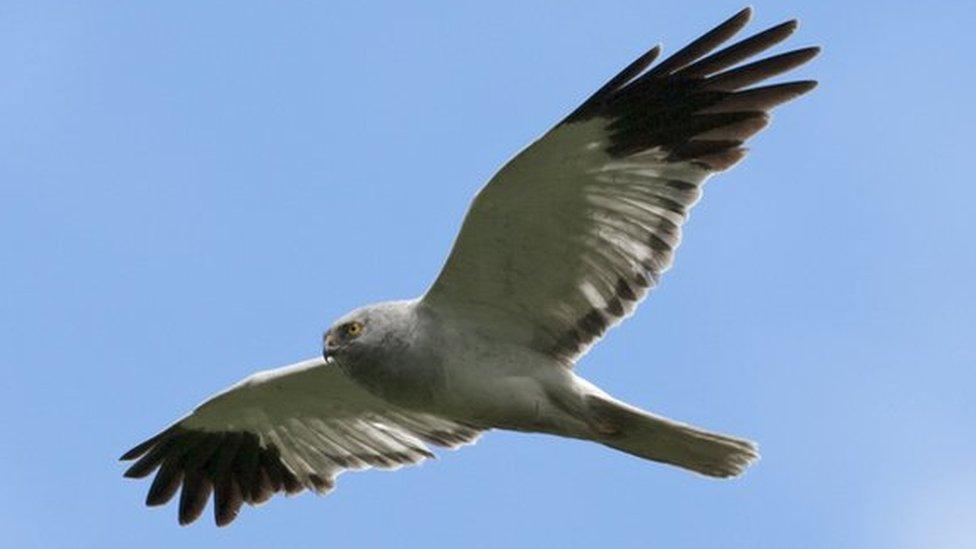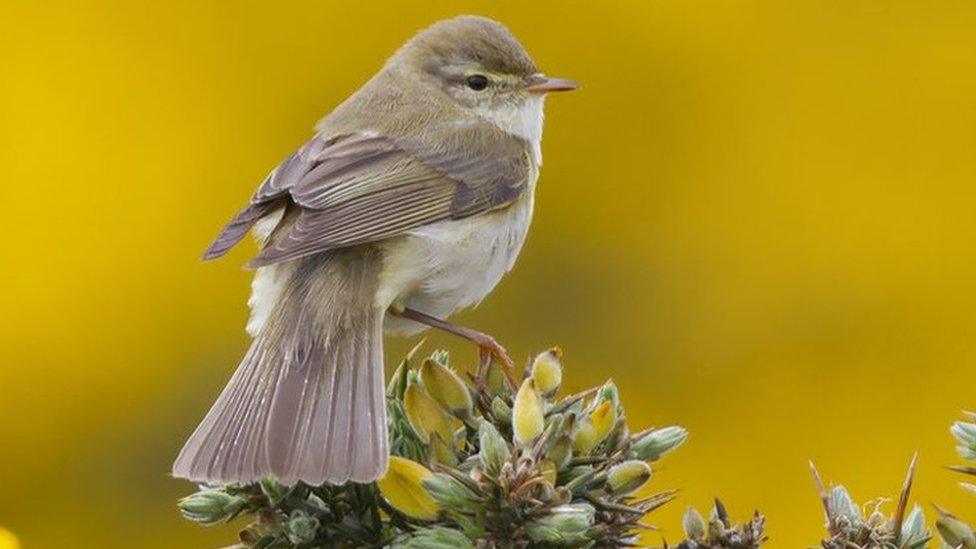Manx hen harrier population stable, charity says
- Published

The Isle of Man hen harrier population peaked at 57 pairs in 2004
The Isle of Man's hen harrier population has stabilised, a bird conservation charity has said.
Manx BirdLife conducted a census of the birds of prey during nesting season between April and July as part of a wider study across the British Isles.
Across the 86 known hen harrier sites in the Manx uplands, 38 territorial pairs were found.
The charity said it was the highest since a peak of 57 in 2004, which had declined to 29 by 2010.
There were unconfirmed sightings of four further pairs, while the birds were seen at another 13 sites but were not thought to be nesting in those areas but rather using them for hunting, the group added.

The number of pairs of hen harriers had dropped to 29 in 2010
The Isle of Man results will be fed into a broader census of the birds being led by the RSPB.
Manx BirdLife managing director Neil Morris said it was "good news" as the figures appeared to show the Manx hen harrier population had been "sustaining itself".
However, he said there was no room for complacency as the island's upland areas were under unprecedented pressure from climate change and increasing human disturbance.
"It's imperative we do everything in our power to protect our harrier population and the large tracts of wild, open land on which they depend," Mr Morris said.
"The Isle of Man is internationally recognised as a stronghold for this bird of prey, and we have a duty to keep it that way."
Even a small future decline in the future could see the species classified as under extreme threat due to its small range and dependence on undisturbed, quality habitat, he added.

Why not follow BBC Isle of Man on Facebook, external and Twitter, external? You can also send story ideas to IsleofMan@bbc.co.uk, external
Related topics
- Published18 April 2022

- Published24 August 2021

- Published11 September 2017
